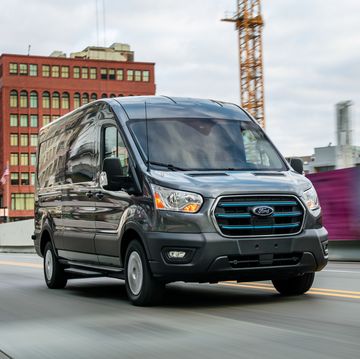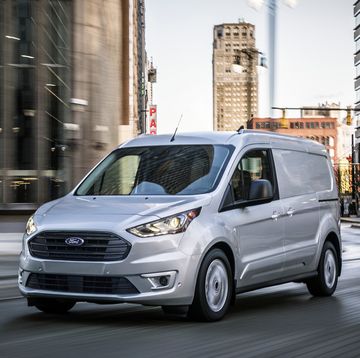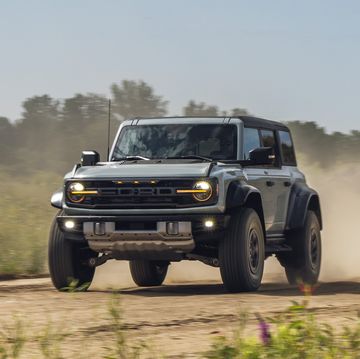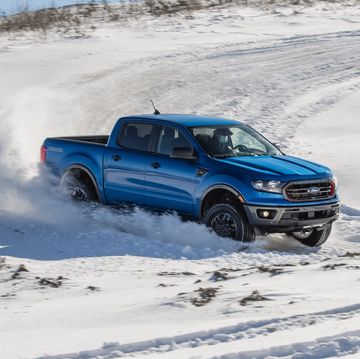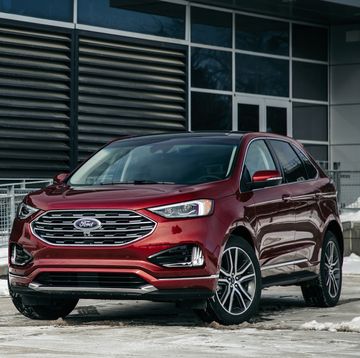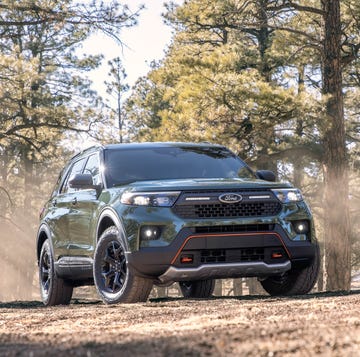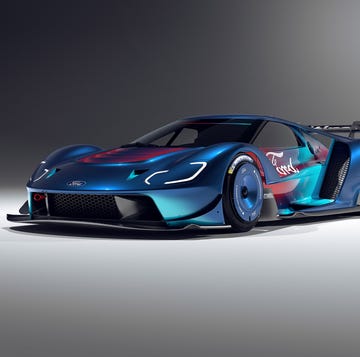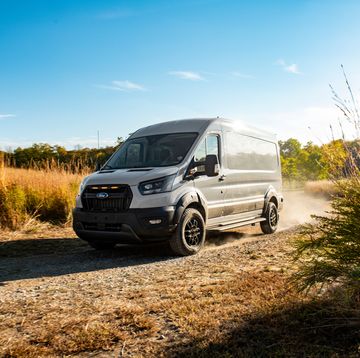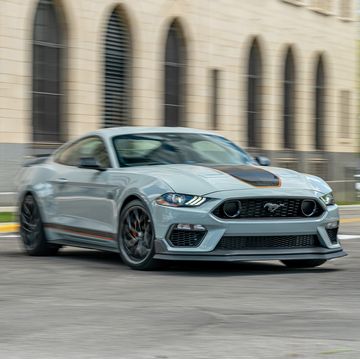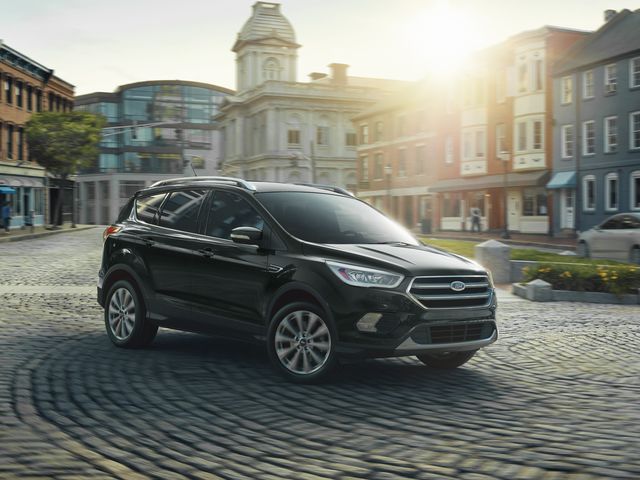
Select a year
- Highs Gutsy top-spec turbo engine, well-balanced suspension, high-tech features available on SE model and up.
- Lows Not as spacious as its rivals, engines could be more efficient, cargo space limited with rear seat in place.
- Verdict It's easy to see why the Escape is a popular option in the crowded compact-crossover marketplace.
Overview
The compact offering in Ford's robust lineup of SUVs is the stylish and agile 2019 Escape, which slots in above the EcoSport and below the Edge. Powered by a choice of three four-cylinder engines—two of which are turbocharged—and underpinned by the same platform as the athletic Focus, the 2019 Ford Escape offers something many of its rivals lack: genuine fun from behind the wheel. The ride is still smooth, and the Escape is easy to pilot even on narrow city streets. It's not as roomy as some of its rivals and isn't as cargo-friendly or fuel-efficient, either, but it's a solid crossover that will suit many buyers and offers a good bang for the buck. An all-new Ford Escape will go on sale in fall 2019 and hybrid and plug-in Escapes will go on sale in spring 2020.
What's New for 2019?
Ford's Sync 3 infotainment system, keyless entry with push-button start, and one-touch up and down power windows are all now standard on SE models for the 2019 Escape; black roof side rails are optional. The compact crossover's available driver-assistance features—automated emergency braking, adaptive cruise control, automatic high-beam headlamps, blind-spot monitoring, lane-keeping assist, and more—have been bundled together in the Safe and Smart Plus package on SE, SEL, and Titanium models. A Sport Appearance package is also new for SEL models and includes 19-inch black-painted wheels, black exterior trim, embroidered floor mats, and two-tone seat upholstery, among other styling enhancements.
Pricing and Which One to Buy
Now that the SE comes standard with the upgraded Sync 3 infotainment system, we think it's the best value in the lineup. It comes standard with a turbocharged 1.5-liter four-cylinder engine, 17-inch aluminum wheels, a 4G LTE onboard Wi-Fi hotspot, dual-zone automatic climate control, and heated front seats. We'd add the aforementioned Safe and Smart Plus package as well. Front-wheel drive is standard; all-wheel drive costs $1500 more.
Engine, Transmission, Performance, and Towing
Likes: Peppy optional 2.0-liter engine, nimble handling, accurate steering.
Dislikes: Pokey-slow 1.5-liter, worst-in-segment braking.
The Escape's top two four-cylinder engines are turbocharged, refined, and pair well with their standard six-speed automatic transmissions. The 2.0-liter engine is genuinely quick, but the smaller 1.5-liter is lethargic. There's an off-the-line throttle lag as the driver waits for the turbocharger to work its magic, but that's not a problem with the 2.0-liter engine. In our testing, we've found that it's one of the quickest in the class. The 2.0-liter also feels more powerful when accelerating, with less protest from the engine and much more oomph on tap for passing maneuvers and tricky highway-merging situations.
One of the better-handling small SUVs, the Escape strikes a finer balance between a comfortable ride and a supple feel than does the competing Honda CR-V. Steering is light but never sluggish, and quite accurate. However, the Escape delivered worst-in-segment performance in our 70-to-zero-mph braking test, needing 184 feet to come to a stop. Compared with the Honda CR-V, which stopped nearly 20 feet shorter, the Escape's result indicates it could smack into something that the CR-V misses entirely. The Escape can tow a maximum of 3500 pounds.
Fuel Economy and Real-World MPG
Based on Ford's heavy advertising around the EcoBoost engine, buyers might expect that the Escape's duo of turbocharged engines will deliver excellent fuel economy. In practice, the engines are less about Eco and more about Boost, utilizing their turbochargers to increase power rather than stretch fuel. In our real-world highway fuel-economy test, the Escape 2.0-liter engine proved itself reasonably frugal with fuel, though it was strictly average for the class with a result of 26 mpg.
Interior, Infotainment, and Cargo
Likes: Roomy front seats, intuitive Sync 3 infotainment system, ample cubby storage.
Dislikes: Plasticky standard interior, tight rear-seat legroom, no center pass-through for rear seat.
The Escape offers an interior for every budget, ranging from plasticky and devoid of features to faintly luxurious and loaded with goodies. The top-of-the-range Titanium version we drove had handsome leather-trimmed seats, metallic trim, and power-operated front seats with memory settings for the driver. Base models offer none of these features, but they provide the same spacious layout that owners will appreciate when circumstances require a vehicle that is roomy enough for adult passengers.
Standard on SE, SEL, and Titanium models, Ford's Sync 3 infotainment system is displayed on an 8.0-inch touchscreen atop the dashboard. It's compatible with both Android Auto and Apple CarPlay for hands-free phone calls, navigation, and other functions. Buyers of the base Escape are out of luck: Sync 3 isn't available, so they'll have to make do with an old-fashioned, non-touchscreen infotainment system.
As one might expect from a crossover of this size, the Escape is ready for duties ranging from a night on the town to a holiday-weekend camping trip. Irregularly shaped cargo will test the Escape's confines, and a full complement of passengers will easily fill the trunk on long trips. If you and a friend happen to be bringing 23 carry-on bags to the airport the next time you fly, the Escape can handle the task when the back seat is folded. We know, because we tested it.
Safety and Driver-Assistance Features
Overall Safety Rating (NHTSA)
The Escape performed well in its crash-testing by the National Highway Traffic Safety Administration, and it protects its passengers with a host of safety systems. However, that gear is mostly optional, and the Escape earned only mid-level scores from the Insurance Institute for Highway Safety. Ford offers a bevy of features, but even in the top trim level, everything except blind-spot monitoring and reverse parking sensors are optional.
- Available adaptive cruise control
- Available lane-keeping assist
- Available forward-collision warning
Warranty and Maintenance Coverage
Ford's standard new-car warranty is one of the most basic in the class. The Kia Sportage's warranty far exceeds the coverage periods of the Escape (as it does most other competitors in this segment).
- Limited warranty covers 3 years or 36,000 miles
- Powertrain warranty covers 5 years or 60,000 miles
- No complimentary scheduled maintenance
